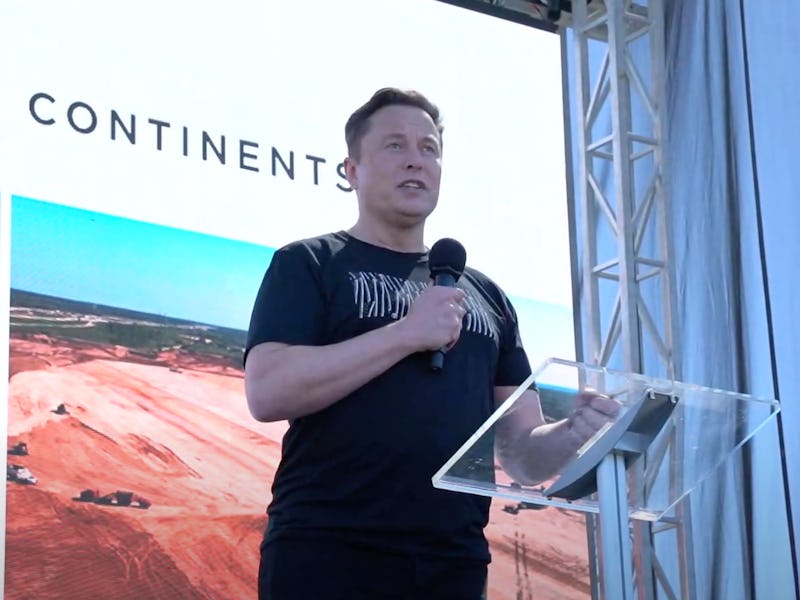Musk Reads: What to know about Tesla Battery Day
A 520-mile Model S, a $25,000 car, and better batteries than ever before.

A 520-mile Model S, a $25,000 car, and better batteries than ever before. It’s Musk Reads: Tesla Edition #204.
A version of this article appeared in the “Musk Reads” newsletter. Sign up for free here.
Musk quote of the week
“We’re confident that, long-term, we can design and manufacture a compelling $25,000 vehicle.”
- Read more about Musk’s big production plans.
Tesla vehicles
It’s finally here. Tesla held its long-awaited Battery Day on September 22 at the company’s Fremont, California, facilities.
The firm’s advanced new batteries, detailed below, will enable a multitude of cheaper and faster cars. The first to be revealed was a $25,000 vehicle. The car, which would undercut the Model 3 by $10,000, is expected to launch in about three years’ time. Musk said that the car, which does not have a name yet, would be “fully autonomous” – perhaps not surprising, as current Tesla cars all share the same sensor suite designed for full autonomy at a later date. Read more.
Another highly anticipated vehicle, detailed at the show for order now and set for delivery in late 2021, is the Tesla Model S Plaid. The triple-motor all-wheel-drive car is expected to feature over 520 miles of battery range, a top speed of over 200 miles per hour, and acceleration from 0 to 60 mph in under 1.9 seconds. The car can finish a quarter mile in under nine seconds. Tesla claims the car is the fastest 0 to 60 mph and quarter mile of any production car ever. Last September, the car took on the Laguna Seca Raceway with a time of one minute and 36 seconds. All this doesn’t come cheap, though, with a starting price of $139,990.
What’s next for Tesla: Tesla is expected to release a private beta of its planned Autopilot “4D” upgrades sometime in the first half of October. Read more.
Tesla batteries
Musk took to the stage and detailed five advancements it’s made for its own battery design. Together, these will lead to a 54 percent increase in battery range between charges and a 56 percent reduction in price per kilowatt-hour.
They are:
- Cell design. The new battery’s tabless design enables fast charging even in bigger cells. The new cell measures 46 by 80 mm, and design changes alone can add 16 percent to the total range.
- Cell factory. A new dry electrode process means 10 times less energy and 10 times smaller footprint for production. Advancements mean a 75 percent reduction in investment per gigawatt-hour. One line can produce seven times more battery capacity than before. Tesla is now aiming for three terawatt-hours in 2030, not including what the firm buys from suppliers.
- Anode materials. Silicon is abundant and can store nine times more lithium than the graphite that’s currently used today. Tesla has designed a method to directly use silicon, costing $1.20 per kilowatt-hour.
- Cathode materials. Tesla aims to replace cobalt with nickel in high-end vehicle batteries, which is cheaper and more energy dense. Iron will be used for low range and nickel manganese for medium-range vehicles.
- Cell vehicle integration. Advancements include using the batteries as part of the structure so they serve a dual purpose. This means a 10 percent mass reduction, a 14 percent range increase opportunity, and 370 fewer parts.
Musk Reads mailroom
Dave March writes:
Since it is a requirement that otherwise silent electric cars produce some kind of sound so that people can hear them coming, wouldn’t it be great for users to be given a choice of what they’d like to sound like? For instance, Shelby GT–500, Ferrari, Harley Davidson.
That would be a great way for people to get the car to sound however they want! Licensing issues may make this difficult, and regulatory issues could stop people from uploading any audio file – the file could be too quiet to meet requirements – but electric cars provide a number of exciting future opportunities.
Tracy and Sherry Moorish write:
We are not able to get the owners’ manual to display on my screen. How can I get it restored? We have iffy memory and need to research occasionally.
Here you go! Direct links to the owners’ manuals are stored on Tesla’s website:
Got any comments or queries? Don’t forget to send them over to muskreads@inverse.com.
Photo of the week
C-A-R-S.
Got a photo or video you’d like to see featured? Send it over to muskreads@inverse.com!
The ultra-fine print
This has been Musk Reads: Tesla Edition #204, the weekly rundown of essential reading about futurist and entrepreneur Elon Musk. I’m Mike Brown, an innovation journalist for Inverse.
- Email me directly at mike.brown@inverse.com and follow me on Twitter @mikearildbrown.
- Follow Inverse on Twitter @inversedotcom.
- Got any comments or queries? Don’t forget to send them over to muskreads@inverse.com.
What did you think of today’s stories? Hit reply to this email to let us know. Thanks for reading!
A version of this article appeared in the “Musk Reads” newsletter. Sign up for free here.